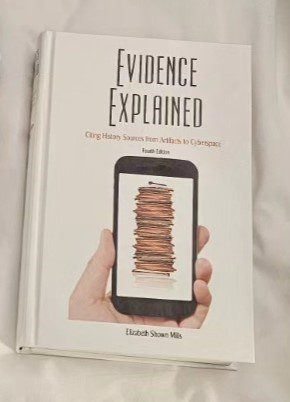Applying the GPS to Your Research

The Genealogical Proof Standard, also known as the GPS, is a set of genealogical standards established by the Board for Certification of Genealogists. It is a guideline that ensures researchers are engaging in thorough and reliable genealogical research. No matter the level of skill and experience you have, understanding what the GPS is and how to apply it to your research can significantly enhance the credibility and quality of your research.
What Is the Genealogical Proof Standard?
The Genealogical Proof Standard comprises five elements designed to guide you through the process of proving, with a high degree of certainty, that your genealogical conclusions are accurate. These elements are:
- Conducting a reasonably exhaustive search.
- Providing complete and accurate citation of sources.
- Analyzing and correlating the collected information.
- Resolving conflicting evidence.
- Concluding with a soundly reasoned, coherently written conclusion.
Let’s take a closer look at each of these elements and how they can be applied to your research.
1. Conducting a Reasonably Exhaustive Search
A reasonably exhaustive search means that you have looked at a wide range of sources relevant to your research objective, leaving no stone unturned. Let’s say your objective is to identify when and where your great grandmother died. You would write a list of sources that can answer your question. This would include death records, cemetery records, obituaries, and family bibles. Your sources can include both direct evidence (evidence that directly answers the research question), or indirect evidence (evidence that requires inference to answer the question). Remember that you are conducting reasonably exhaustive research, not exhausting research. Having an idea about the kinds of sources that can answer your question will help you to perform an exhaustive search. A thorough search not only increases the chance for uncovering accurate information, but it can also help you to resolve any conflicting evidence, should it arise.
A tip for conducting a reasonably exhaustive search is to keep a research log of all the searches you have performed, and whether they provide positive or negative results. Writing down everything you’ve looked at also ensures that you do not redo research you have already completed. It also helps you know when you have conducted an exhausted search.
2. Providing Complete and Accurate Citations of Sources

Every piece of information you gather must be accompanied by a clear and complete source citation. At first this might seem like a technical and annoying task, but you will thank yourself later when you are able to show where you got a particular piece of information. Not only do source citations lend credibility to your research, but it also allows you and other researchers to revisit the source and determine its credibility and accuracy. Accurate citations are the backbone of trustworthy genealogical research.
Your best friend for crafting source citations will be Evidence Explained by Elizabeth Shown Mills. Her book, lately published with a new edition, provides the information you need to craft any source citation. Genealogy software and tools can also be used to help you craft source citations. Some websites, like FamilySearch, provide good citations, which may only need to be tweaked a little to fit your format. Be sure to craft a citation for negative searches, not just positive searches.
3. Analyzing and Correlating the Collected Information
Collecting information is just the beginning. After you have gathered information from many different sources, the next step is to evaluate the evidence for its reliability and relevance to answering your genealogical question. You must also compare and contrast the information from different sources.
Many different things about a source can help you determine its reliability. Who was the informant on the death certificate? Is it someone who would have firsthand knowledge of the event? Another question you must ask is how long after the event occurred did the record get created? The more time that has passed since an event occurred before it is recorded increases the risk for mistakes. You must also take into account original vs. derivative records. An original record is the death certificate, but an index record of the certificate is a derivative. Derivatives create another step for misinformation.
A tip for correlating the collected information about your ancestor is to create a timeline. There are many ways to easily create timelines. Genealogy software, Excel, and AirTable are just a few ways to create a timeline.
4. Resolving Conflicting Evidence
It is not uncommon to encounter discrepancies between sources of the same information. The Genealogical Proof Standard requires that conflicting information must be resolved. For example, a death date on a death certificate may differ from the date on the tombstone. You must analyze the sources to determine why this might have occurred, and which date is more likely to be accurate. A death certificate, in most cases, is created very shortly after a person dies. However, a tombstone may not have been erected until years after the person died, and the date of death on the tombstone likely came from a family member who had to remember the date of death.
A tip for resolving conflicting evidence is to look at who the informants are for the information, why the records were created (could there be motivation for people to provide inaccurate information?), and how long after the event occurred was the record created.
5. Concluding with a Soundly Reasoned, Coherently Written Conclusion

After you have gone through all the steps of the Genealogical Proof Standard, it is time to put everything together into a written conclusion. This does not necessarily mean you have solved the research question, but your conclusion should reflect the most plausible scenario based on the evidence collected.
There are several types of written conclusions. A proof summary is a simple written proof that often includes a lot of direct evidence and minimal conflicting information. A proof argument is a more complex writing that often includes lots of indirect and conflicting evidence.
Conclusion
The Genealogical Proof Standard is more than a set of rules; it is a guide for making meaningful and accurate connections with the past. The GPS will not only elevate the quality of your work, but also ensures that the information and stories about your ancestors are told with the most accuracy possible.
Every research project with Price Genealogy receives a well-written, and sourced, research report, following the Genealogical Proof Standard format. If you need help with your research, reach out to Lineages today!
Tyler
Resources:
Board for Certification of Genealogists – Ethics and Standards https://bcgcertification.org/ethics-standards/
Evidence Explained – https://www.evidenceexplained.com/
Evidence Analysis Explained – LegacyTree Genealogists https://www.legacytree.com/blog/evidence-analysis-sources
